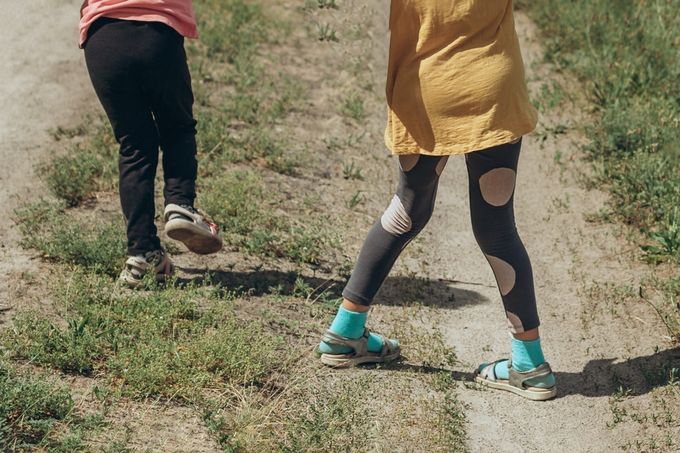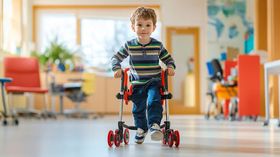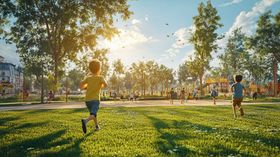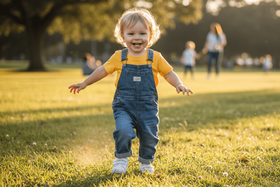Do Knock Knees Affect Height Growth? Unlocking the Connection
Learn how knock knees affect growth plates—a connective tissue responsible for bone growth
Updated September 17, 2024

Knock knees—the opposite of bowlegs—is a condition where the knees bend inward, causing a noticeable gap between the ankles when the knees are together. This contrasts with normal leg alignment, where the knees are vertically aligned over the ankles when standing upright.
Many parents wonder if this condition can affect their child's height growth. Let's explore the connection between knock knees and childhood development.
» Give your child the support they need to address knock knees
Understanding Growth Plates and Leg Alignment
Growth plates are thin connective tissue discs at the end of long bones in children and adolescents. These plates play a crucial role in bone growth and alignment. Over time, they gradually harden, eventually stopping bone development altogether.
The relationship between growth plates and leg alignment is complex:
- Uneven Growth: If growth plates on one leg develop faster than those on the other side, it can lead to an imbalance in leg length and alignment, potentially exacerbating knock knees.
- Damage Risk: Severe knock knees or injuries can damage growth plates, causing them to harden into solid bone prematurely.
- Alignment Issues: Abnormal leg alignment can affect the functioning of growth plates, potentially limiting the growth of the leg's long bones.
» Learn the role of arch support in children's foot health
Impact of Knock Knees on Growth Plates
While knock knees can influence growth plate function, it's important to note that most cases resolve independently as children grow. But, in some instances, the condition may impact overall height:
- Premature Hardening: If growth plates harden earlier due to damage or stress from misalignment, it can limit the growth potential of the affected leg.
- Uneven Leg Length: Discrepancies in leg length caused by knock knees can affect overall posture and potentially impact final height.
- Biomechanical Stress: The altered biomechanics of walking and standing with knock knees may affect the normal growth patterns of bones and joints.
» Check out the best shoes for tippy-toe walkers
How Proper Footwear Can Help with Knock Knees
- Stability and Support: Shoes with firm heel counters help stabilize the ankle and heel. This improved stability can promote better overall leg alignment.
- Arch Support: Adequate arch support helps distribute weight evenly across the foot. This can reduce inward rotation of the ankles, potentially alleviating stress on the knees.
- Shock Absorption: Well-cushioned shoes absorb impact during walking and running. This can reduce stress on growth plates and joints, potentially supporting healthy bone development
- Gait Correction: Some specialised shoes can help guide the foot into a more neutral position. Over time, this may encourage improved walking patterns and leg alignment
- Comfort and Activity Promotion: Comfortable, supportive shoes encourage physical activity. Regular exercise is crucial for overall bone health and development
» Support your child's walking with the best shoes for first steps
Supporting Your Child's Development
Knock knees are a typical developmental phase in childhood that can temporarily affect leg alignment. While they may influence a child's posture, the condition typically resolves independently as your kid grows. In most cases, knock knees don't significantly impact final adult height.
To support proper foot development and improve leg alignment, consider investing in footwear with good arch support and stability features. These shoes can help maintain foot health and provide additional support.
» Give your child the confidence to walk tall with shoes that address knock knees
Related Articles

Adaptive Footwear: Meeting the Needs of All Children
Babafemi Adebajo
December 6, 2024

Gait Abnormalities in Children: Types, Causes and Treatment
First Walkers
June 10, 2025

Cerebral Palsy and Toe Walking: Understanding the Connection
Jasrah Javed
January 9, 2025

5 Reasons to Encourage Your Kids to Run & Sprint
Jasrah Javed
February 3, 2025

10 Best Running Shoes for Bow Legs in Kids: Comfy & Supportive
First Walkers
October 23, 2025

